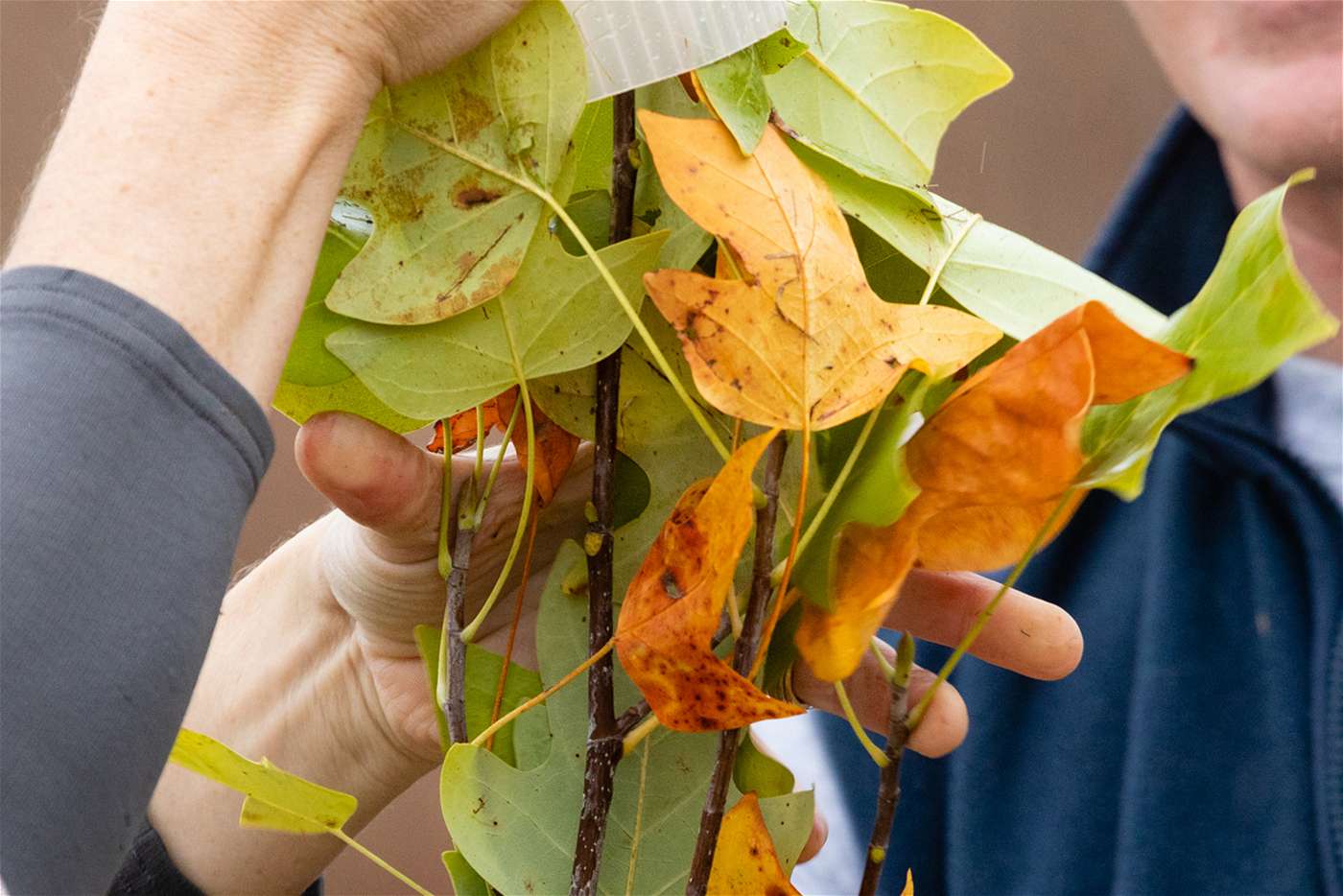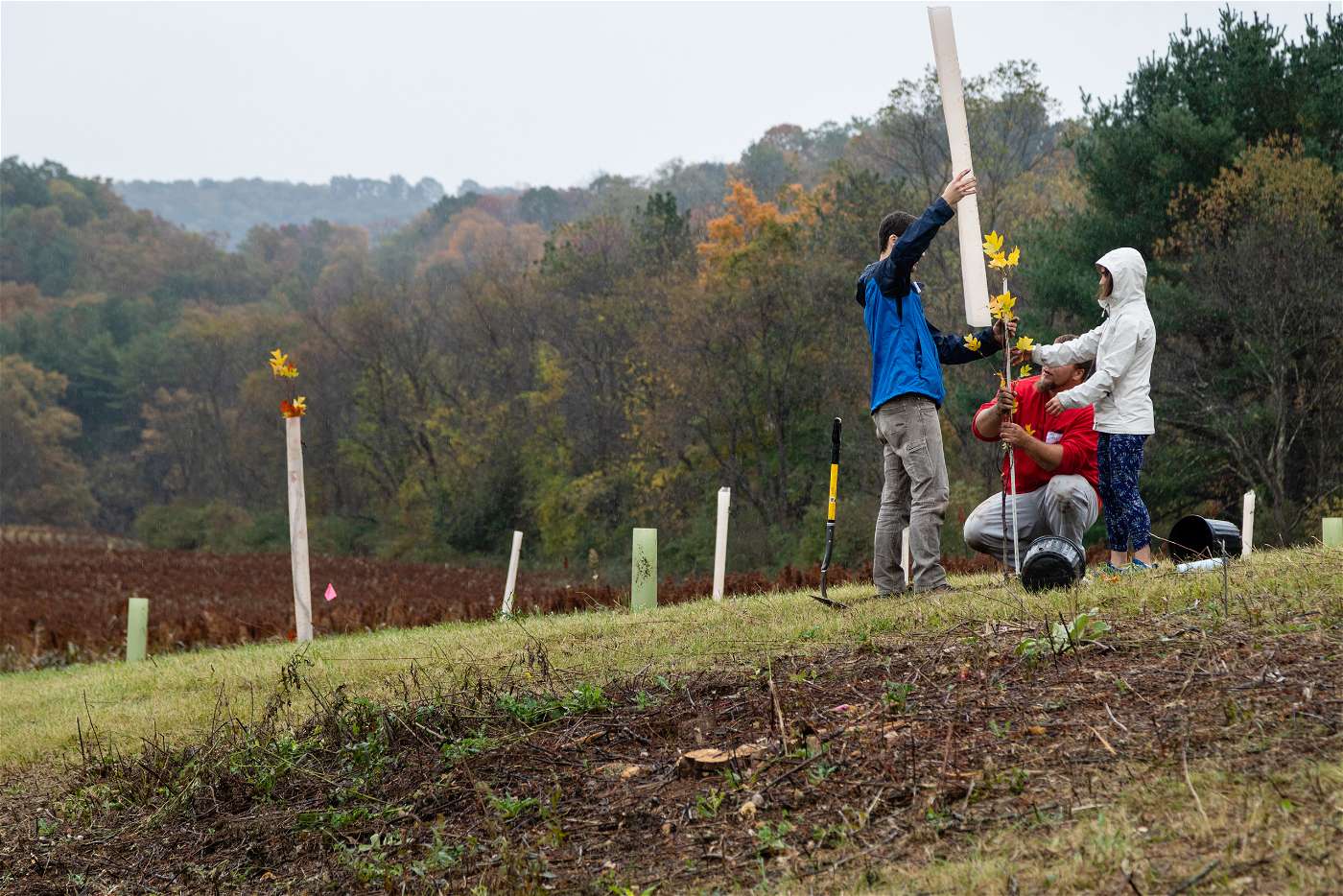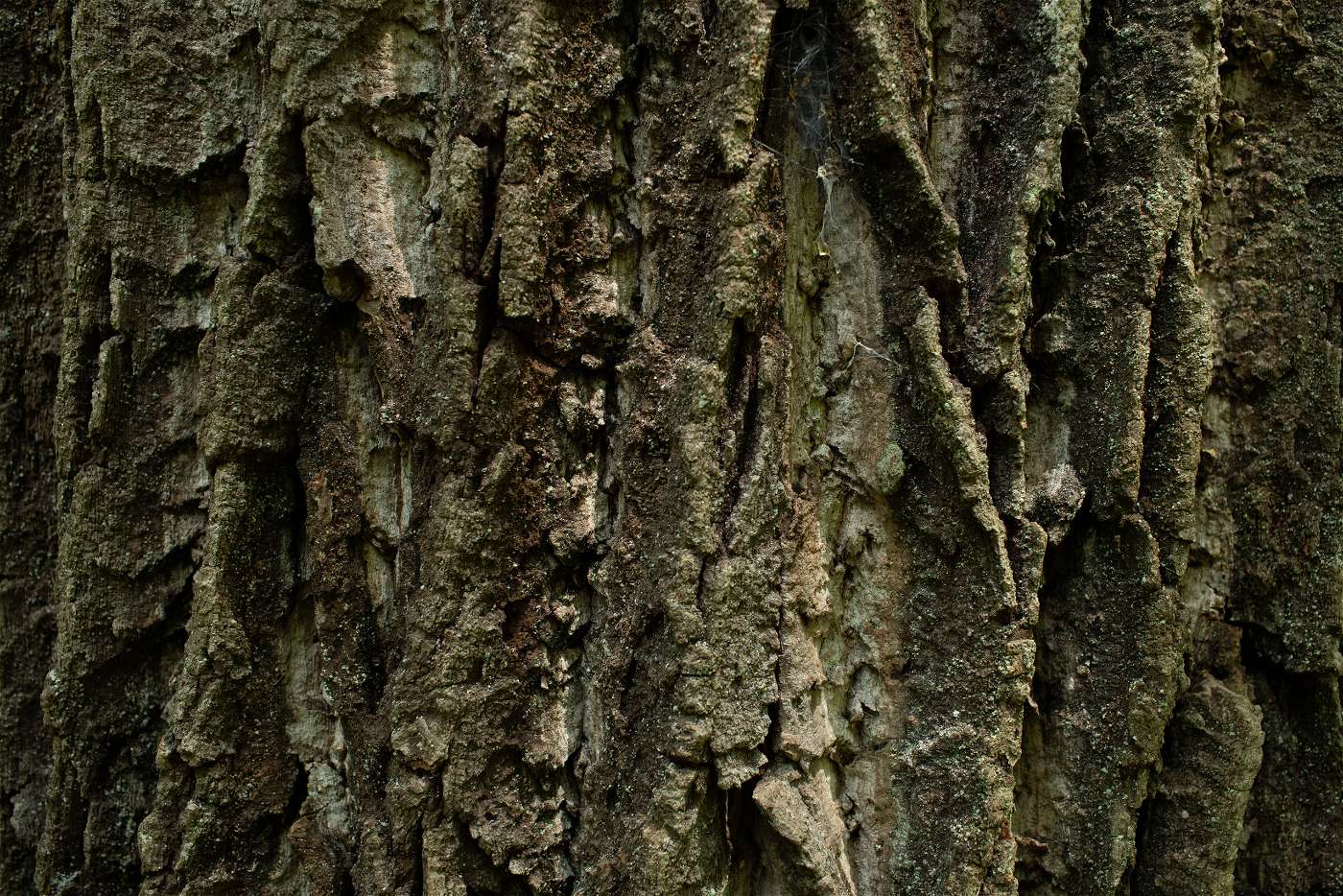HORN FARM CENTER FOR AGRICULTURAL EDUCATION
Growing healthy food, restoring ecosystems, and protecting the health of our waterways.
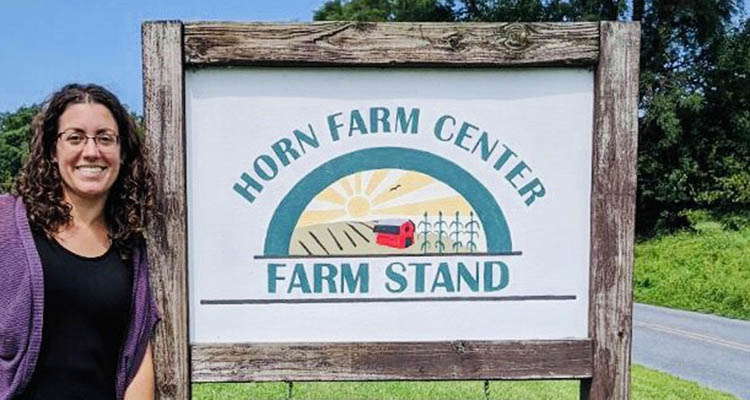
The Horn Farm Center in York County, Pennsylvania, is part of the watershed that feeds the Susquehanna River, one of the three oldest rivers in the world. Our work as land stewards not only affects the ecosystem that the Horn Farm exists within, but also impacts the health of the river, and the Chesapeake Bay.
In the past few years, we have been experimenting with best practices for water management on the farm. Starting in 2018, we began the work of transitioning several acres of farmland into multi-functional riparian buffer landscapes. By planting more than 17,000 trees on the Horn Farm by 2022, our goal is to produce food and agroforestry products while building wildlife habitat and protecting our waterways. This work is supported by the Keystone 10 Million Trees Partnership and the Pennsylvania Department of Conservation and Natural Resources.
When we first set out to transform our agricultural land into regenerative perennial systems, we had no idea how this work would transform our ideas of what is possible, both on the land in our community. The Horn Farm Center has become a wellspring of innovation and connection, and the K10 Partnership has provided the waters for this sea change.
It first began with a 6-acre riparian buffer on the western side of the farm. Of the nearly 6,000 trees that were planted, most varieties were selected to be “multifunctional” providing food, fodder, and agroforestry products while protecting a small tributary of the Kreutz Creek. Fruit and nut producing trees and shrubs were planted in the buffer as well as other species that lend themselves toward coppice such as willow for basketry.
To bolster the biodiversity of the farm’s early succession species, the Horn Farm team planted black willow, honey locust, black locust, basswood and poplar. These species were picked for their capability to reseed and grow rhizomatically. Their planting patterns were experimental but successful. About 540 trees were planted in 40 cells using a technique called “applied nucleation.” Each cell will grow and merge creating a mosaic early succession forest and old field ecotone capable of creating a diverse habitat for birds, insects and mammal species.
This isn’t the only successful experimentation that has emerged from our partnership with K10. Horn Farm Woodland Steward, Wilson Alvarez, has made it his mission to redefine the way we design and cultivate woodland ecosystems. His research and work led him to focus on the Miyawaki method of rapid reforestation. Using biomimetics as a guide, these high-density systems respond quicker and more efficiently, helping us move closer to our ultimate goal of creating ecosystems rather than native tree plantations.
Beyond our evolving understanding of ecological restoration, we have learned that the simple act of planting trees can bring people and communities together in ways we never imagined. Since completing our first riparian project and subsequently breaking ground on a new 6-acre multifunctional buffer on the eastern side of the farm, we have built a resilient network of people and organizations who care deeply about the health of our land and water.
Just this year, we have had over 160 volunteers help us with planting trees. Collectively these hardworking volunteers have planted nearly 7,000 trees in just three months. Additionally, we found our place within a larger community effort to reduce Pennsylvania’s impact on the Chesapeake Bay. Some of our partners include:
- Watershed Alliance of York
- York County Planning Commission
- York County Conservation District
- Penn State Cooperative Extension & the Master Watershed Stewards Program
- Department of Conservation and Natural Resources
- Students from Stone Independent School and The Big Do project
- York County School of Technology
Many of these relationships have been made through the Keystone 10 Million Trees Partnership and we are grateful for the ongoing collaborations that have resulted. Together we are growing healthy food, restoring ecosystems, and protecting the health of our waterways.
Alexis Campbell, Executive Director, Horn Farm Center for Agricultural Education
-
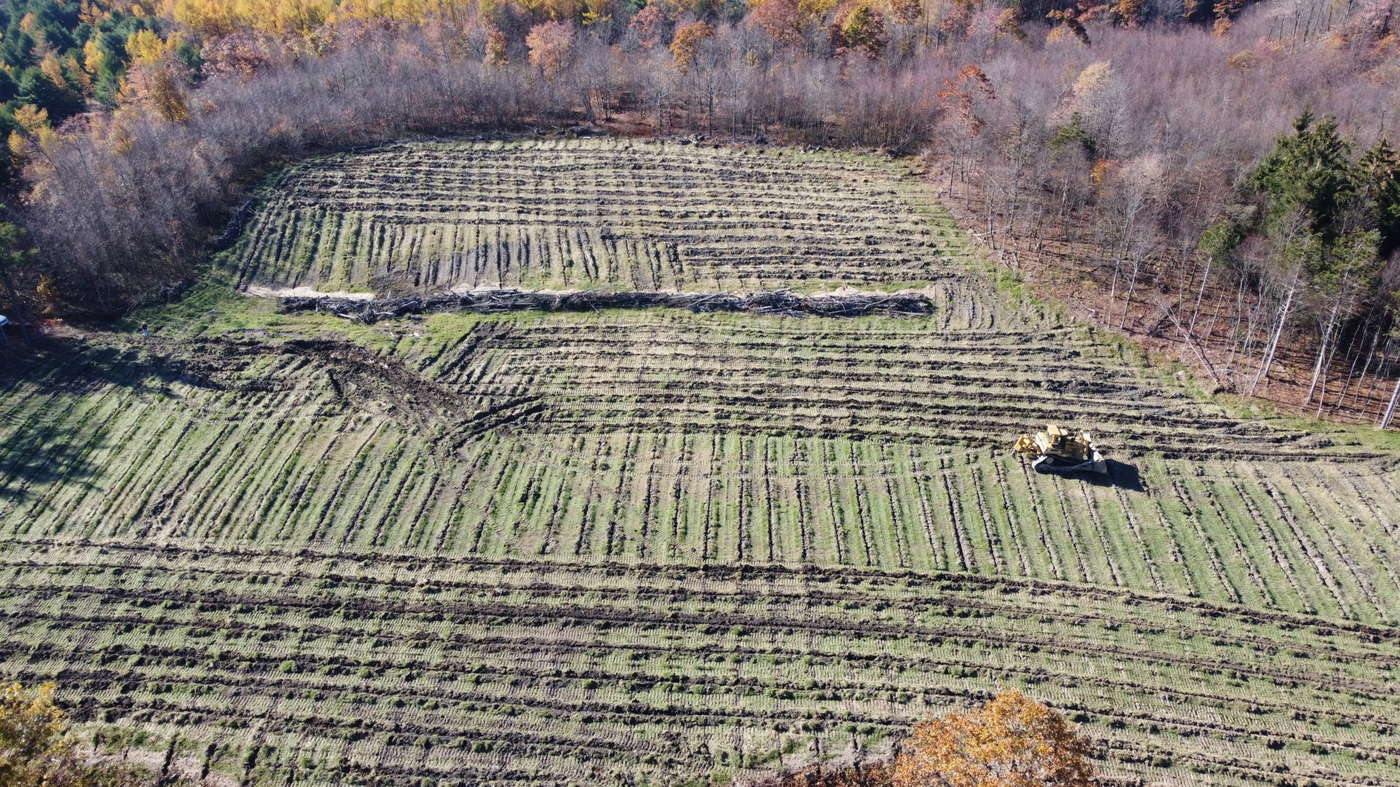 Partner Story
Partner StorySUSQUEHANNA RIVER BASIN COMMISSION
Returning forests to reclaimed mine lands.
-
 Partner Story
Partner StoryFriends of Flight 93
The National Park Service, Friends of Flight 93 National Memorial, and National Park Foundation have partnered to continue a significant reforestation project that will soon result in 150,000 newly planted trees at Flight 93 National Memorial.
-
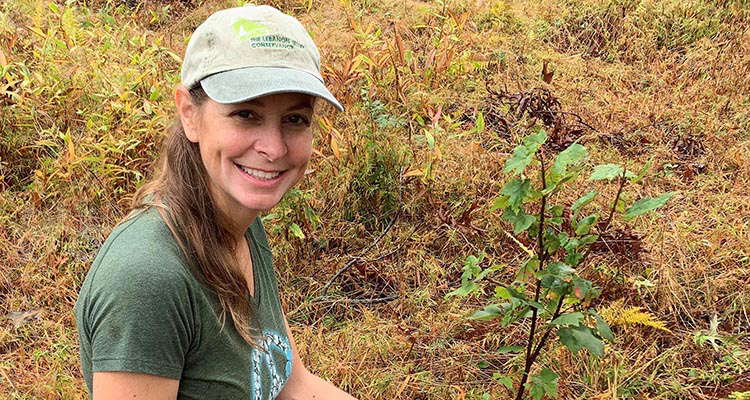 Partner Story
Partner StoryTHE LEBANON VALLEY CONSERVANCY
How partnership and preservation can change the landscape.


